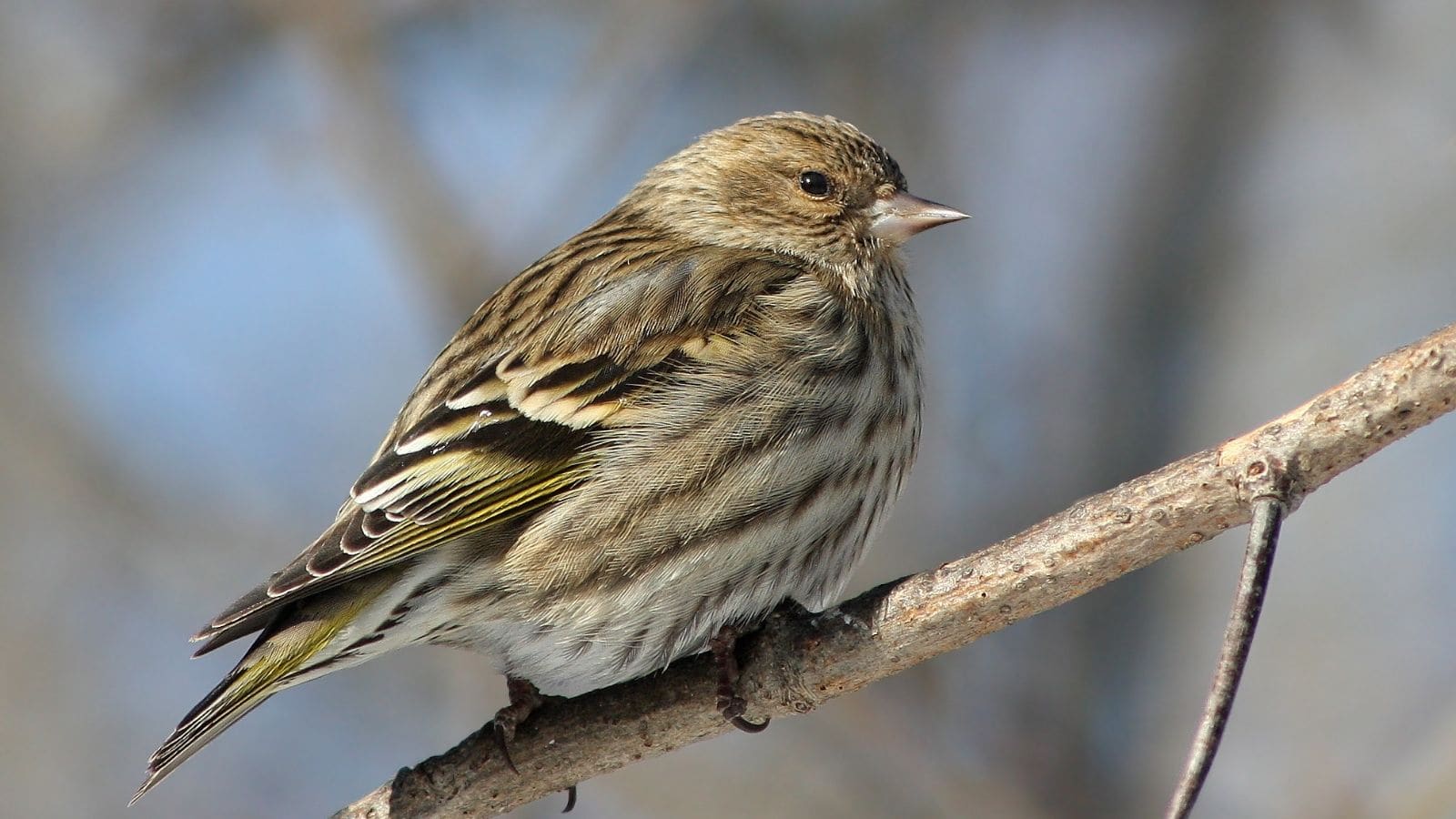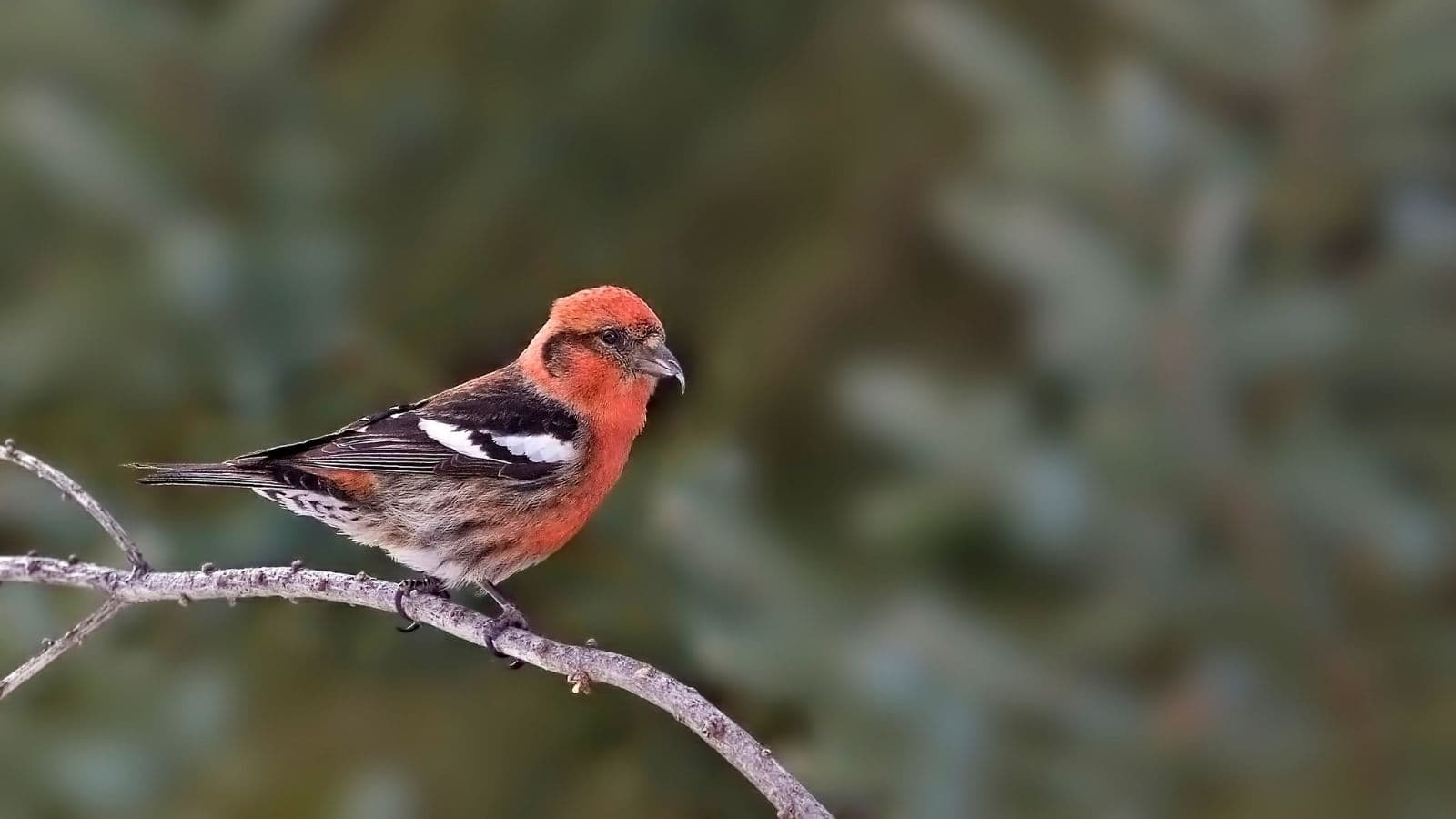Whether you’re out exploring the Red River Gorge or hanging out in Louisville, you’re bound to encounter some of the 375 bird species that call Kentucky their home.
Finches are a good example of a bird family that can be found in the countryside as well as in cities, and of the 30 species that reside in North America, 8 of them can be seen in Kentucky.
While they may appear to be a rather ordinary family of birds at first glance, finches turn out to be fascinating birds to get to know better. Several species are highly nomadic, so it can be extremely exciting to catch rare glimpses of species that only occasionally travel to more southerly regions like Kentucky.
Backyard feeders are one of the best ways to draw in finches for a closer look, and doing so might even reward you with a chance visit from one of the state’s rarest visitors like the evening grosbeak or common redpoll.
Now I’m sure you’re excited to get to know Kentucky’s finches!
Finch Species in Kentucky
American Goldfinch

- Scientific Name: Spinus tristis
- Length: 4.3-5.1 in (11-13 cm)
- Weight: 0.4-0.7 oz (11-20 g)
- Wingspan: 7.5-8.7 in (19-22 cm)
By far and away the most common finch in the midwest, the American goldfinch appears in over 40% of bird watcher report cards during the breeding season and is ticked off on only slightly less during the winter months.
As well as migrating, another reason for fewer sightings in the winter could be due to their radical change in appearance. While males take on dazzling yellow colors during the summer months, both sexes turn a drab gray in winter, making them harder to distinguish from other finch species.
At nesting time, American goldfinches build nests among small trees and shrubs. Females lay around four to six eggs and incubate them exclusively while the male brings her food.
In winter, American goldfinches move around in flocks, often mixed with other finches, and descend on bird feeders in the countryside and in towns. Among their very favorite foods are thistle seeds and sunflower seeds.
House Finch

- Scientific Name: Haemorhous mexicanus
- Length: 5.1-5.5 in (13-14 cm)
- Weight: 0.6-0.9 oz (16-27 g)
- Wingspan: 7.9-9.8 in (20-25 cm)
House finches may be very striking birds, but some people consider them an invasive species in the Eastern half of the United States.
Originally native only in the far west, introduced house finches have come to dominate the southeast to the peril of some native birds. Unlike most finches, they don’t migrate and often remain in the same localities year-round.
One of the secrets to their success is their affinity for human habitation – it’s not unusual to find them nesting in quiet buildings or even in hanging baskets! They’re also famous for visiting bird baths.
House finches are among the most voracious visitors to backyard bird feeders and can be found nibbling away at platform feeders and tube feeders throughout the year. They also feed on some types of fruits and insects.
Purple Finch

- Scientific Name: Haemorhous purpureus
- Length: 4.7-6.3 in (12-16 cm)
- Weight: 0.6-1.1 oz (18-32 g)
- Wingspan: 8.7-10.2 in (22-26 cm)
Purple finches have been among the hardest hit species by the introduction of house finches in the east. While they would have once been more common here, they’re now only seen by less than 5% of birdwatchers in the winter months and are almost all but absent during the summer.
It’s not only invasive species that are to blame, however. Purple finches have also been hit hard by habitat loss and human development. Because they’re not well adapted to living around buildings like house finches, purple finches have lost out as their former landscapes have been developed.
Although purple finches have sometimes been persecuted by gardeners, modern research has established that they actually do more good than harm. Feasting upon cutworms, lice, and weed seeds, these birds should be considered a gardener’s friend rather than a gardener’s foe!
In summer, most purple finches fly north to breed in Canada. Only a very few pairs remain behind to breed in South Easterly states like Kentucky.
Pine Siskin

- Scientific Name: Spinus Pinus
- Length: 4.3-5.5 in (11-14 cm)
- Weight: 0.4-0.6 oz (12-18 g)
- Wingspan: 7.1-8.7 in (18-22 cm)
Now, for one of the most widespread finches in North America, pine siskins can be found in every state of mainland USA, including Alaska. Known as an ‘eruptive species’, these busy little birds will suddenly turn up anywhere that can provide the tree seeds that they rely on.
While pine siskins are indeed very fond of pine kernels, they also feed on hemlocks, alders, birches, and other trees with small seeds. Large flocks tend to show up in Kentucky in years when these seeds are particularly abundant, or when crops have failed in other regions.
Pine siskins are mainly winter birds in Kentucky, although a few sometimes breed here, too. Nests are built between 10-50 ft high in trees and are constructed from twigs, bark, and moss. Females lay 3-5 eggs which take around 13 days to hatch.
Because they often join flocks with goldfinches, learning the pine siskin’s raucous, metallic calls is a great way to identify them.
Evening Grosbeak

- • Scientific Name: Hesperiphona vespertina
- Length: 6.3 to 8.7 in (16 to 22 cm)
- Weight: 1.37 to 3.04 oz (38.7 to 86.1 g)
- Wingspan: 12 to 14 in (30 to 36 cm)
Now we move onto the rarer finches in Kentucky, the evening grosbeak are only occasional visitors this far south, but make for a very exciting sighting if you do see one!
Evening grosbeaks are big, chunky finches that dwarf every other finch in the region. With a wingspan of 14 inches across, they’re more similar in proportions to a brown-headed cowbird or hairy woodpecker than most of their relatives.
With their trademark yellow ring around their crown, solid black and white wings, and enormous bill, they’re difficult to mistake for any other bird.
Evening grosbeaks will only tend to travel to the southeast when crops fail further north. They travel in tight flocks and use their mighty bills to prize open seeds that other birds can’t get into.
Red Crossbill

- Scientific Name: Loxia curvirostra
- Length: 5.5-6.5 in (14-17 cm)
- Weight: 1.4 oz (40 g)
- Wingspan: 10-10.75 in (25-27 cm)
Red crossbills are another beautiful northerly finch species that are rarely seen this far south. Although they do have a few breeding outposts in neighboring Tennessee and Ohio, they’re extremely rare in Kentucky and are only reported by about one in a thousand bird watchers during the winter.
If you do spot a crossbill you’ll probably know all about it. Males are a beautiful red color year-round, whereas females are olive green. Their distinctive bills really are crossed at the tips, a special adaptation allowing them to pick open fiddly conifer seeds.
The only other bird you could confuse a red crossbill for would be the white-wing crossbill, although the reds are chunkier and lack the white patches of the wings that characterize their relatives.
Curiously, red crossbills have a weakness for salt and can be seen feeding on salted roads as well as salt blocks used for livestock in winter!
Common Redpoll

- Scientific Name: Acanthis flammea
- Length: 4.7-5.5 in (12-14 cm)
- Weight: 0.4-0.7 oz (11-20 g)
- Wingspan: 7.5-8.7 in (19-22 cm)
Common redpolls are even more of a northerly, cold climate specialist than our previous two species, so you’d be very lucky to see one in Kentucky! They only show up here very occasionally in winter when food sources are depleted elsewhere.
Common redpolls are characterized by the red caps that are present in both male and female birds. Males of the southern subspecies also have a pronounced pink breast throughout the year. Although they look very similar to hoary redpolls, their cousins never travel this far south.
Nesting in boreal forests and arctic tundra from Alaska to Greenland and Siberia, common redpolls have an extraordinarily vast range. Flocks will typically announce their presence with noisy, electric calls when they’re in the area.
Although redpoll flocks will often travel high in tree line out of sight, they’ll also visit platform feeders, tube feeders, and thistle feeders, allowing backyard birders to catch a rare glimpse of these nomadic explorers.
White-Winged Crossbill

- Scientific Name: Loxia leucoptera
- Length: 5.9-6.7 in (15-17 cm)
- Weight: 0.8-0.9 oz (24-26 g)
- Wingspan: 10.2-11.0 in (26-28 cm)
Appearing very similar to red crossbills, white-winger crossbills are slightly more slender with white patches on their wings. Females are also more of a grayish yellow than the attractive green of their more common relatives.
According to Sibley’s Guide to Birds, the white-winged crossbill’s occasional range only extends to the northern reaches of Kentucky, so you’d be extremely fortunate to spot them here.
- Sibley Guide To Birds, 2nd Ed
- Sibley, David Allen (Author)
- English (Publication Language)
Last update on 2024-04-27 / Affiliate links / Images from Amazon Product Advertising API
If you are lucky enough to see white-winged crossbills, it will almost certainly be several of them at once, feeding in coniferous forests. These birds prefer smaller conifer seeds than pine kernels and can sometimes be seen picking open spruce and hemlock cones on the floor.
The comical, parrot-like behavior of crossbills is a joy to behold and both species are quite tame and unafraid of human contact. One explanation is that since they spend most of their time in desolate, northern forests, they’ve rarely encountered humans for the duration of their evolution.
Conclusion
Whether you’re enjoying watching goldfinches eating thistle seeds from your backyard feeder or catching a precious glimpse of pine siskins foraging among the treetops, there are countless opportunities to encounter these energetic, lively birds in Kentucky.
Because finches can sometimes be confused with sparrows, it might be a good idea to familiarize yourself with the sparrows of Kentucky, too. We’ve made a complete list of them here, and guess what? There are more than twice as many sparrows as finches in the Bluegrass State!

